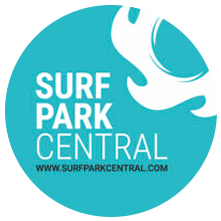By: Katie Rodriguez
From the moment surfing was announced to join the other 32 sports at the 2020 summer Olympics, skepticism surrounding the location and conditions ran rampant. The stage for surfing’s debut was set for Tsurigasaki Beach, Ichinomiya, just 60 miles east of Tokyo in a region not particularly known for its stellar surf. Additionally, the parameters for the contest established a strict window of time – just eight days at the end of July – to complete the competition.
Many began speculating that if surf conditions proved to be horrendous during the short period of time allotted for competition, surfing might get positioned in an unfortunate quagmire when it came to future Olympics. In the weeks leading up to the event, this speculation brought many eyes to the buzz surrounding the opening of American Wave Machine’s latest surf park – PerfectSwell Shizunami in Makinohara, Japan. The opening of PerfectSwell Shizunami’s Japan surf park around the time of the Olympic games wasn’t just a smart business move, but also shone a light on surf parks as training facilities for surfers.

Despite the debate that ensued around whether or not the event should be hosted in a wave pool or the ocean (and the subsequent hype around the surf park that followed), the Japanese beach break provided conditions that eventually put the 40 men and women to the test. Tropical Storm Nepartak churned up the waters to pump out some sporadically clean waves far bigger than expected, giving the athletes the ability to showcase their abilities in the wild surf. “Looking back, there was a lot of time when we didn’t know whether it was on or off,” inaugural coach of the U.S Olympic surf team, Brett Simpson. “Once that first horn rang, it was like, oh my gosh – it was a real moment. Then it ended up working out. We got really good waves. I mean, considering the last twenty years have been really small at that time.”
Are Surf Parks the future of Olympic Games training?
However, the days leading up to the Olympics competition brought dismal surf with waves running an average of two feet. Simpson and the U.S team (Caroline Marks, Carissa Moore, John Florence and Kolohe Andino) arrived with little time to overcome jet lag and without being able to practice at the event site until just five days before competition. It was during this window of time where, from a training perspective, the new PerfectSwell Shizunami wave pool showcased an incredible strategy.
“Looking back, [training at the surf park] was a huge benefit because we were surfing legit waves when most people were really groveling in the ocean.”
Brett Simpson, U.S. Olympic Surf Coach
Other than the U.S team, the Japanese surf team were the only ones to utilize the Japan surf park as grounds for training. With Kolohe and John still in recovery from injuries, having the surf park at their disposal gave them the upper hand to work on repeatability and body strengthening techniques in a controlled environment. “When John got there, I think he was probably 50 percent, and by the time we left five days later from the pool, he jumped probably into the 70 percent range, which was ginormous for him,” Simpson says.
In agreement with Simpson, CEO of USA Surfing Greg Cruse acknowledged some of the outstanding benefits of using the surf park to train.“It gave [John] the ability to ramp up slowly, test the knee, make sure everything was right and gain confidence in it prior to surfing in the Olympic heats,” Greg shares. “There’s a chance you can hurt yourself by going too big, but you can also rehabilitate yourself. It altered their confidence quite a bit.”
The timing and location of the opening of PerfectSwell Shizunami was no doubt an ingenious marketing ploy that not only amplified the awareness around the surf park, but also, it further illuminated the concept of the use of controlled environments for working on mobility and maneuvers. Before the 2020 Olympics in Japan, several surf teams had expressed interest, and some even sought out their own designated surf park. In 2018, Australia selected Kelly Slater’s Wave Pool all the way out in Lemoore, California – while the U.S surf team chose BSR Cable Park in Waco, Texas as their designated training site.

Wave pools are already becoming established as a major thread in the fabric of contemporary surf culture – but moving forward, we’re left with questioning how lucrative (and perhaps, advantageous) these facilities will be as avenues to train for future competition and Olympics. What these facilities have been shown to offer to pros and amateurs alike is the opportunity to work on perfecting maneuvers. While this doesn’t mean that it’ll translate to ocean environments, Greg Cruse believes it can certainly be applied. “By being able to work it out in a repeatable controlled environment, you can then take that to the ocean, and with confidence you’ll know the makeability of some of these things that you worked on in the wave pool. Your percentage of makes is going to be high and your confidence is going to be high and you’re going to be going for it. So it’s going to push the progression of surfing for sure – it already has,” Cruse shares.
Video evaluation, a huge advantage in training sessions, is becoming an option at several surf parks thanks to Surfline. Surfline has installed cameras at Alaia Bay in Switzerland as well as Surf Snowdonia in the U.K; and currently has placeholders on their site for BSR Cable Park and the Surf Ranch in Lemoore.
In light of the numerous surfers on the WSL Championship Tour out with injuries last year, Brett and Greg acknowledge the risk at surf parks to multiply the incident of injury within a given session. On the flip side, however, advancements in technology can help study the movement patterns of a surfer, and help locate poor form in an effort to correct those mistakes. According to Greg Cruse, USA Surfing is working to dig into the nuances of working with functional movement, ensuring that maneuvers are being done correctly with 3D motion analysis. “With our 3D motion analysis program with Microsoft, we’re trying to figure out how surfers move, how to measure their range of motion and their strength within that range, and how to improve that strength within the proper range of motion,” Greg says. “We think that’s going to prevent a lot of injuries – testing that out and training for that kind of thing needs a controlled environment like a wave pool. So we want training facilities and trainers and physical therapists and surf coaches at every wave pool that opens up.”
With the 2024 Olympic surfing competition slated for Teahupo’o, Tahiti – one of the most coveted, and perhaps most intimidating waves out there – using surf parks to work on maneuvers like airs won’t be nearly as beneficial as PerfectSwell Shizunami was for the U.S team in Japan. But whether it’s rehabilitating from injury, testing out new boards, practicing during mid-season, or studying form with 3D tech – surf parks are proving to be a useful tool when it comes to training.
When it comes to naming the next designated Olympic team surf park for the U.S? It’s still too soon to tell. “As far as naming one training facility, if we have a place that we can go with a wave that everyone universally accepts, then we’ll definitely consider that. And so far the PerfectSwell tech (in my mind) is the best as far as being able to train for aerials and being able to mix up the wave.” – Greg Cruse.
























You must be logged in to post a comment Login